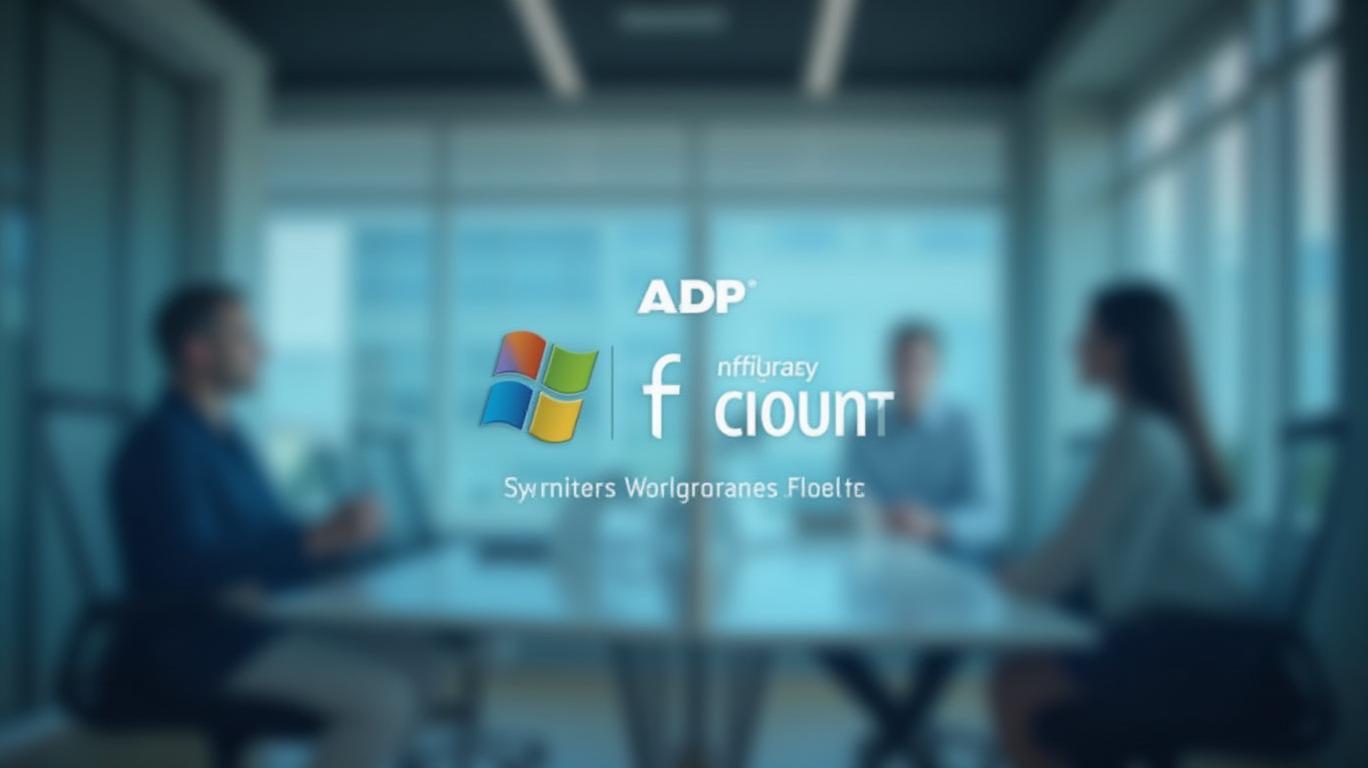ADP’s CFO Transition Signals Stability Amid Growth Ambitions
The Shift at the Helm: ADP’s Leadership Change and Its Investment Implications
Automatic Data Processing (ADP) has long been a stalwart in the human capital management (HCM) space, but its recent announcement of a key leadership transition has investors asking: How does this reshuffle align with the company’s trajectory?
On April 30, 2025, ADP revealed that Peter Hadley, its longtime senior executive and current Corporate Vice President and Treasurer, will succeed Don McGuire as Chief Financial Officer effective July 1, 2025. McGuire, who has helmed ADP’s finance operations since 2021, will remain through September 2025 to ensure a seamless handover. The move underscores ADP’s emphasis on internal leadership continuity—a theme reflected in CEO Maria Black’s praise for Hadley’s “deep institutional knowledge” and “strategic contributions to global expansion.”
Hadley’s credentials are robust. With 23 years at ADP, he has held roles spanning finance, international operations, and corporate strategy. As Treasurer since 2022, he managed ADP’s capital structure, global funding, and investor relations. Before joining ADP, he worked at global accounting firms KPMG and Arthur Andersen, bolstering his expertise in financial governance. Black’s decision to promote from within signals confidence in Hadley’s ability to navigate ADP’s next phase of growth.

Financials Fuel Confidence in the Transition
ADP’s Q2 fiscal 2025 results provide a strong backdrop for this leadership shift. Revenue rose 8% year-over-year, while adjusted earnings per share (EPS) surged 10%, outpacing analyst expectations. The company reaffirmed its full-year guidance: 6–7% revenue growth and 7–9% EPS growth. These figures, coupled with a 48.2% gross profit margin and a $120.3 billion market cap, suggest robust operational health.
Yet challenges linger. ADP anticipates “third-quarter softness,” likely tied to seasonal fluctuations in payroll processing. Here, Hadley’s experience in global finance and his track record in stabilizing ADP’s capital structure may prove critical. His tenure as Treasurer, where he oversaw $10.4 billion in long-term debt and optimized liquidity, positions him to manage near-term volatility while supporting long-term ambitions.
Strategic Momentum Beyond the CFO Seat
The transition aligns with ADP’s broader strategy of leveraging technology to deepen its HCM leadership. A key example is its partnership with Fiserv to integrate Clover payroll technology into ADP’s Run platform. This move targets small- and mid-sized businesses—a segment where ADP faces rising competition from cloud-based rivals like Gusto and Zenefits. The integration could boost ADP’s client retention and cross-selling opportunities, as highlighted in its recent earnings call.
Additionally, ADP’s focus on innovation is reflected in its R&D investments, which rose 12% year-over-year in fiscal 2024. This emphasis aligns with CEO Black’s vision for “future-ready solutions,” a priority that Hadley’s global experience will likely amplify.
Conclusion: A Smooth Transition, But Challenges Remain
ADP’s CFO transition appears well-timed and strategically sound. Hadley’s deep institutional knowledge, proven financial acumen, and global leadership experience position him to sustain ADP’s growth trajectory. The company’s strong Q2 results, reaffirmed guidance, and partnerships like the Fiserv deal further bolster its case as a resilient HCM player.
However, investors must weigh these positives against macroeconomic risks. ADP’s reliance on payroll services—sensitive to employment trends—means its performance hinges on labor market stability. The company’s 2024 workforce data, which showed a 3% dip in small-business client retention, underscores the need for innovation to counter competition.
In the near term, ADP’s stock—up 18% over the past year compared to the S&P 500’s 10% gain—reflects investor optimism. Yet sustaining this momentum will require Hadley to balance short-term pressures (e.g., Q3 softness) with long-term bets like the Clover integration. For now, the transition appears a shrewd move, leveraging internal expertise to navigate a competitive landscape. As ADP’s Q3 earnings (due April 30) approach, investors will watch closely for signals of whether this leadership shift is a catalyst for sustained value creation.

Comments
No comments yet